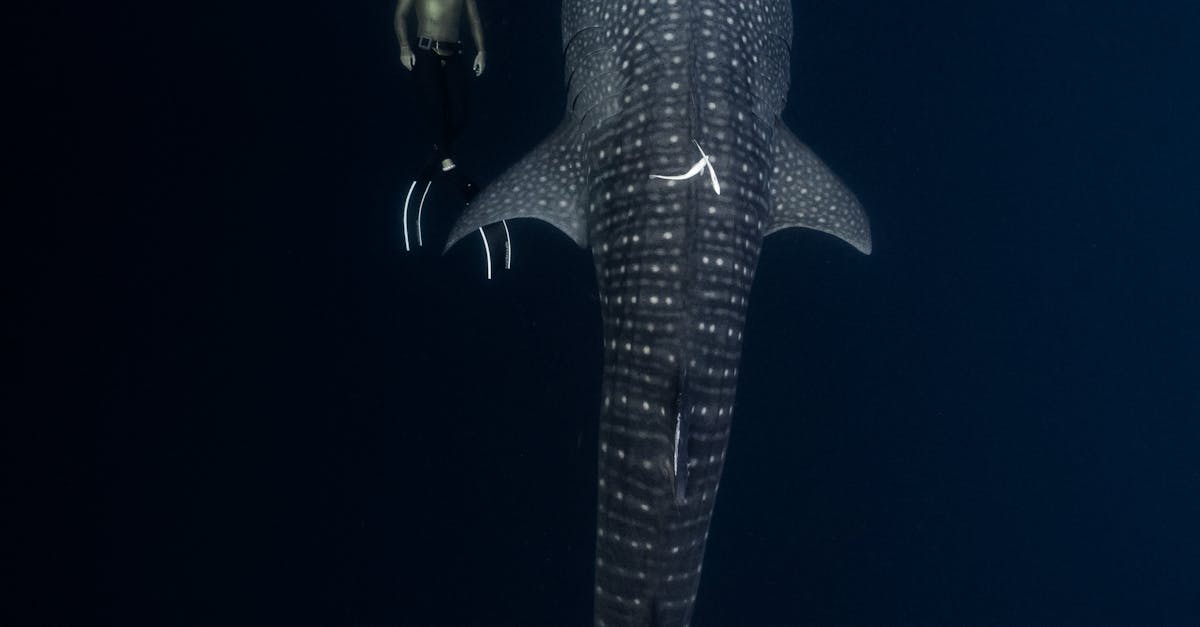Whale sharks, the gentle giants of the ocean, captivate the hearts of marine enthusiasts and casual observers alike. These magnificent creatures are the largest fish in the world, and their unique appearance is as intriguing as their behavior. In this article, we will explore the striking features of whale sharks, providing you with a comprehensive understanding of what makes them so special.
| Feature | Description |
|---|---|
| Size | Whale sharks can grow up to 40 feet long or more. |
| Color | They have a distinctive pattern of white spots and stripes on a dark blue-grey background. |
| Mouth | Their mouths are wide and can measure up to 5 feet across. |
| Skin Texture | Their skin is rough and covered with dermal denticles. |
| Gills | Whale sharks have five large gill slits on each side of their head. |
| Tail | Their tail fin is tall and crescent-shaped, providing powerful propulsion. |
| Dorsal Fin | The dorsal fin is large and triangular, often seen above the water’s surface. |
| Behavior | They are known for their slow, graceful swimming and surface feeding. |
| Habitat | Whale sharks are found in warm, tropical waters around the world. |
| Reproduction | They are ovoviviparous, meaning they give birth to live young. |
Size
Whale sharks are the largest fish species in the world, capable of reaching lengths of up to 40 feet or more. Some reports suggest they can even grow beyond 60 feet. Their massive size is truly awe-inspiring, and it is not uncommon for divers to feel small in the presence of these gentle giants.

Color
The coloration of whale sharks is one of their most distinguishing features. They have a dark blue-grey body adorned with a unique pattern of white spots and stripes. This beautiful pattern is not only visually striking but also serves as a form of camouflage in the open ocean, helping them blend into their surroundings.

Mouth
One of the most notable characteristics of whale sharks is their enormous mouths, which can measure up to 5 feet across. This wide mouth is specially adapted for filter feeding, allowing them to consume vast quantities of plankton and small fish as they swim through the water.

Skin Texture
The skin of a whale shark is rough and covered with dermal denticles, which are small, tooth-like structures. These denticles help reduce drag as the shark swims, allowing for a more efficient movement through the water. The texture also provides protection against parasites and other potential threats.

Gills
Whale sharks possess five large gill slits on each side of their head. These gills are essential for respiration, allowing the shark to extract oxygen from the water as it swims. The size and number of gill slits are indicative of their filter-feeding lifestyle, enabling them to process large volumes of water.

Tail
The tail fin of a whale shark is tall and crescent-shaped, which provides powerful propulsion and helps the shark navigate through the water. This unique tail structure allows them to swim gracefully and efficiently, making them adept at traversing their oceanic habitat.

Dorsal Fin
Whale sharks have a large, triangular dorsal fin that can be seen protruding from the water’s surface. This fin is not only an identifying feature but also plays a role in stabilizing the shark as it swims. The sight of a whale shark’s dorsal fin is a thrilling experience for divers and snorkelers alike.

Behavior
Known for their slow and graceful swimming, whale sharks exhibit a calm demeanor as they glide through the water. They often engage in surface feeding, where they open their mouths wide to take in plankton and small fish. This behavior makes them a popular attraction for eco-tourism and snorkeling adventures.

Habitat
Whale sharks are typically found in warm, tropical waters around the world. They prefer areas with abundant food sources, such as near coral reefs or upwelling zones. Their migratory patterns often take them to popular diving locations, where they can be observed in their natural habitat.

Reproduction
Whale sharks are ovoviviparous, meaning they give birth to live young. Females can carry up to 300 embryos at a time, which hatch internally and are released as miniature versions of the adult. This unique reproductive strategy is still not fully understood, and researchers continue to study the life cycle of these fascinating creatures.

FAQ
What do whale sharks eat?
Whale sharks primarily feed on plankton, small fish, and other microscopic organisms. They are filter feeders, using their wide mouths to take in large amounts of water and trap food using their gill rakers.
Where can I find whale sharks?
Whale sharks can be found in warm, tropical waters around the world. Some popular locations for spotting them include the Maldives, the Philippines, and the Gulf of Mexico.
Are whale sharks dangerous to humans?
No, whale sharks are not dangerous to humans. They are gentle giants and pose no threat to swimmers or divers. In fact, they are known for their docile nature and often allow people to swim alongside them.
How long do whale sharks live?
The lifespan of whale sharks is believed to be around 70 to 100 years, although some individuals may live longer. Their long lifespan is one of the reasons why they are important to marine ecosystems.
What conservation efforts are in place for whale sharks?
Many organizations and governments are working to protect whale sharks through conservation initiatives. These efforts include creating marine protected areas, regulating fishing practices, and raising awareness about the importance of preserving these majestic creatures.
References:
– [National Oceanic and Atmospheric Administration (NOAA)](https://www.noaa.gov)
– [World Wildlife Fund (WWF)](https://www.worldwildlife.org)
– [Marine Conservation Society](https://www.mcsuk.org)
